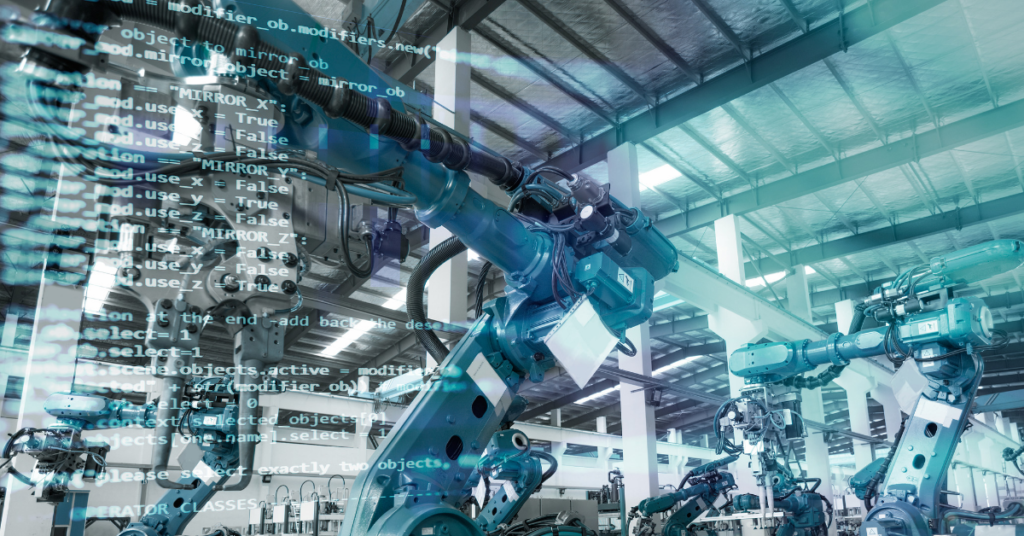Digitalisation (digitalization) is a process that results in the digital transformation of a business. It involves moving passed digitisation (digitization) – way beyond digitisation, in fact. With digitALISAtion, you don’t simply move from using paper-based systems to digital systems. Instead, you transform your business, blending the physical world with the digital world so they effectively work as one.
The result is a digital business, i.e. a pharmaceutical or medical device manufacturer that is a fully digital business.
A range of technologies is involved in the digital transformation of a manufacturing business. This includes:
- Robots
- Cobots
- Software that automates manufacturing processes
- Software that automates other business processes and that integrates those processes with the manufacturing process
- Sensors and semiconductors that are connected to the internet
- Artificial intelligence
- Machine learning
- Data analytics
- Cloud technology
- Collaborative working technologies
- Virtual, augmented, and mixed reality
- And more
What are the business opportunities of digitally transforming your business, though? Here are some of the most important.
Improved Productivity
Factory automation technologies improve output rates and reduce error rates. Digitalisation can also improve most – if not all – manufacturing processes. Batch changeovers are a significant example where digitalising the process can cut changeover times from 10, 20, 30 minutes (or more) to a couple of minutes (or less).
Additionally, sensors and machine learning technologies can improve OEE and reduce breakdowns, leading to further improvements in productivity. A good example of this is systems receiving real-time data from sensors that they can then use to predict failures before those failures occur.
More Efficient Use of Resources
The digitalisation of a manufacturing business involves using machines and software to perform functions that are currently performed by people. This allows companies to redeploy and reallocate their resources in a more effective way.
For example, if a machine or system fails in a traditional manufacturing environment, the manufacturer may need to call an engineer for support. That engineer may then need to travel to the manufacturing facility to complete the repair.
Not only does digitalisation make it possible for this process to be done remotely: digital twin technologies take it much further. Digital twin technologies allow support engineers to keep a virtual twin of the equipment or machine, updated with real-time data. The engineer will, therefore, know there is a problem at the same time as the manufacturer.
In addition, a digital twin with artificial intelligence capabilities could predict the failure and either automatically schedule maintenance or send process updates, both of which can potentially prevent the failure from occurring.
More Effectively Working with Suppliers, Regulators, and Others
By digitally transforming a business, it’s possible to build digital bridges with companies and organisations in distribution and supply chains. Automating these processes reduces errors as well as decision-making times. This offers a range of benefits including the more efficient management of raw material stock levels or finished product output.
Improving Communication and Oversight
Digitalisation makes communications more efficient while also adding transparency to communications. Collaborative software and cloud technologies are good, practical examples of this.
Digitalisation also means there is no longer a need to be in a physical location to have full management overview of what is going on. Among other things, systems can send reports with real-time data, while it is also possible to remotely operate processes, functions, and systems.
Product Customisation
Product customisation is a manufacturing trend that is going to become bigger and more important to a wider range of companies. However, in a traditional manufacturing setup, even one with extensive robotic automation, it’s not possible.
With digitalisation technologies, though, manufacturing businesses can move to small batch and mixed manufacturing, opening the door to product customisation.
The benefits of this are substantial including increased revenues, extending the reach of your brand, and building better relationships with customers.
Enhancing the Customer Experience
Opportunities like product customisation enhance the customer experience but there are other ways digitalisation can make this happen too. For example, integrating sales, marketing, and customer service systems with manufacturing systems brings customers closer to the business overall.
In addition, some of the technologies mentioned above can also make after sales support more effective. Putting sensors in products for maintenance and product support purposes is a good example. Another is running a digital twin of a product that is on-site with a customer to ensure optimal performance and reduce failure rates.
Product Development
With digitalisation, manufacturers can take customer feedback a stage further with sensors that provide real-time data. This provides invaluable information for engineers and those responsible for product development, i.e. they will know how customers and end users actually use products rather than making assumptions.
Improved Safety
There are many examples of this:
- Robots, cobots, drones, virtual reality, and other technologies make it possible to use a machine in, or send a machine into, a hazardous environment rather than a person
- E-learning technology can improve health and safety training across an entire organisation
- Machine learning can inform health and safety procedures based on facts, reducing accident rates
- And more
The Future is Now
It is not possible to achieve full digital transformation immediately… or even within a few years. These technologies are, however, being implemented in production facilities around the world right now. To remain competitive and take full advantage of the opportunities above, the time to advance the digitalisation of your business is now.

